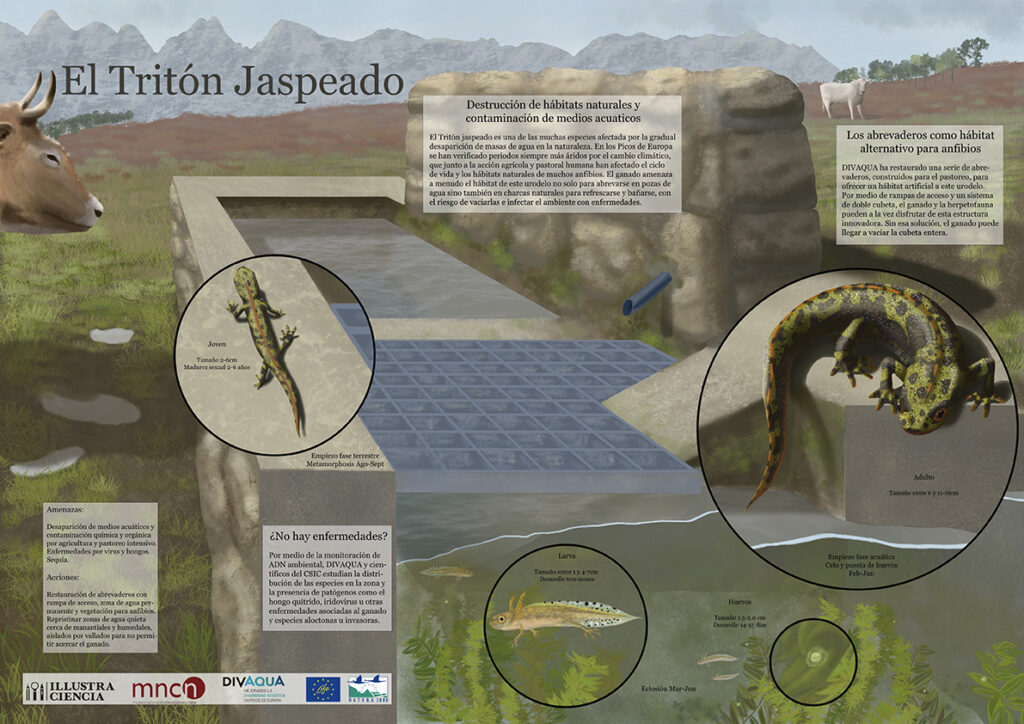Destruction of natural habitats and pollution of aquatic environments
The marbled newt is one of the many species affected by the gradual disappearance of natural bodies of water. In the Picos de Europa it has been shown that more arid periods have occurred due to climate change, which, along with human farming and grazing activity, has affected the life cycle and natural habitats of many amphibians. Livestock often threatens the habitat of this salamander, not only by drinking from pools of water but also wallowing in natural ponds to cool off and wash themselves, at the risk of emptying these bodies of water and infecting the environment with diseases.
Water troughs as an alternative habitat for amphibians
DIVAQUA has restored a number of water troughs, originally built for grazing livestock, in order to provide this salamander with an artificial habitat. By means of entry ramps and a dual water tray system, the livestock and the herpetofauna can both enjoy this innovative structure at the same time. Without this solution in place, the livestock could even empty the whole water tray.
